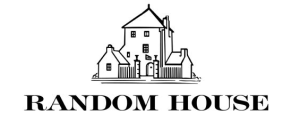What is the key to persuasion in your content marketing strategy? We feel emotion is the most critical element of persuasion. That is a hands-down fact in our minds. If should definitely help you change your content marketing.

Is it a secret? We hope not, or we have had it wrong for all these years. But it seems like a hidden truth for many businesses. Or camouflaged.
Many brilliant ideas come to people offline, in dreams, or in surprise moments when they’re not trying to figure things out. What happens is this: the conscious, problem-solving part of our mind hits a wall and gets stuck. That’s when the problem gets turned over to our subconscious mind.
That’s how Elias Howe’s invention of the lock stitch the sewing machine happened. That’s how Rene Descartes came up with the Scientific Method. And that’s what Seymour Cray, the inventor of the Cray Supercomputer, attributed his success to — the ability to walk away from a problem and let his subconscious mind do the work. Where and when do you get your best ideas away from work?
One of the most surprising things about our motivation is that it often comes after starting a new behavior, not before. We have this common misconception that motivation arrives as a result of passively consuming a motivational video or reading an inspirational book.
However, active inspiration can be a far more powerful motivator. Motivation is often the result of an action, not the cause of it. Getting started, even in very small ways, is a form of active inspiration that naturally produces momentum.
A crucial point to remember is that you can’t dictate change by mandate. You can’t overpower, but must attract people and empower them so that they can take ownership of the cause and make it their own. You need to accept that people will do things for their own reasons, not for yours.
Most of all, remember that every action has to have a clear purpose and be directed at influencing specific institutions. So before taking any action, ask two questions: Who are we mobilizing, and to influence what?
I like to refer to this effect as the Physics of Productivity because this is basically Newton’s First Law applied to habit formation: Objects in motion tend to stay in motion. Once a task has begun, it is easier to continue moving it forward. You don’t need much motivation once you’ve started a behavior. Nearly all of the friction in a task is at the beginning. After you start, progress occurs more naturally.
In other words, it is often easier to finish a task than it was to start it in the first place. Thus, one of the keys to getting motivated is to make it easy to start. Before we talk about how to get started, let’s pause for just a second.
Certainly, Leo Burnett understands what is needed, though. Certainly something we should learn how to apply well. Take a good look at these examples of content marketing.
It is a simple concept. People don’t read ads, they read what interests them.
So if you are going to generate content marketing campaign designs, you are going to have to create an interesting copy. And, oh, by the way, it must be more interesting than the millions of other advertisements out there. Now that is a daunting task, isn’t it?
Is your business using content marketing as a facet of your marketing strategy? It certainly is all the rage now, isn’t it? It seems marketers are falling all over themselves to increase budgets, increase volume, and in many cases, decrease value when you make content marketing killer mistakes.
Like any other business initiative, content marketing is a STRATEGY, not a tactic. And as such it should be planned and executed with well thought out processes and procedures.
Have you noticed that the world of marketing is changing? And rapidly. Traditional media vehicles are losing effectiveness as people communicate in new and different ways. Mass audiences are fragmenting into small segments. Developing a point of difference is harder than ever. These examples of content marketing demonstrate that many brands have certainly noticed.
Related: 11 Steps to Media Framing Messages for Optimum Engagement
In keeping with our objecting to showing great examples, we now turn our lens to several awesome content marketing examples. These are ones that stand out to us.
Anthropologie’s content marketing strategy
Anthropologie frequently features do it yourself cocktail recipes on their blog, like this one for a coconut cooler. The drink recipes work for two main reasons.
First, they’re seasonal and timely. (For example, summer refreshers or winter warmers)
Second, they feature unique ingredients and flavors, mimicking the original style of Anthropologie’s fashions.
Like many examples of the best content marketing, these posts aren’t an obvious play for sales. Anthropologie doesn’t sell homemade bitters or simple syrup.
Instead, the posts position Anthropologie as a trendy, knowledgeable friend. A friend who knows a thing or two about drinks, as well as clothes.
Wistia’s Learning Center Videos
It’s a simple concept, but Wistia executes it to perfection. They use short, educational videos that teach viewers how to be better video marketers.
Each short lesson is a microcosm of some concept within video marketing. This includes bulleted lists for easier retention of the subject matter.
I can think of very few brands that couldn’t create a video series like this for their products or services. In fact, minimal resources would be required. Check out this example video on concept fundamentals.

Content Marketing … Birchbox Beauty Advice
Birchbox is a popular purveyor of monthly beauty boxes. The brand also runs an excellent content marketing program.
This program includes how-to videos of useful beauty tricks (for example, getting beach waves for short hair and how to look great post-flying).
They’re essentially running a full-scale beauty magazine without the mess of paper and addresses.
Content Marketing … Callaway Golf YouTube Is a Hole in One
Callaway Golf scores on YouTube, with excellent content that isn’t overly salesy or promotional. Videos include how to hit a bump and run and vertical centers of gravity in golf drivers.
You don’t have to be a Callaway customer to benefit from this content. The next time you’re purchasing a golf club, you might just consider Callaway for their know-how and generosity.
Arcade Fire’s Fan-Sourced Gallery
One genius way to create content without much in-house effort is crowd-sourcing. Arcade Fire asked fans to submit their own photos of the band’s Reflektor tour.
In return, the fans’ photos could wind up on Arcade Fire’s Facebook page and website. This was a win for both the band and fans. The website benefited from new photography, and fans earned a spotlight on their favorite band’s online properties.

Random House Literary Inspiration
I appreciate the way Random House takes readers into the digital era with their Pinterest account and corresponding content.
Books have been around forever, but publishing companies are just getting started when it comes to e-books and online engagement.
Take a look at a few of Random House’s Pinterest board titles:
- The Literary Imbiber
- What Would Jane Austen Do?
- Bookish Nooks
- Literary Tattoos
- Literary Wedding
- Best Book Covers
Random House doesn’t write all the articles or create all the images associated with these boards. However, curating them for their fans in a one-stop book-lovers shop is a surefire win.
With such targeted and well-curated content, it’s no wonder they have nearly 1.5 million Pinterest followers.
Content Marketing … Panera Bread Cozies Up to Pinterest
Pinterest is a great platform to build curated content because there’s so much readily available to re-pin and package.
These include albums and stories that fit with your brand. See what Panera Bread has done on Pinterest. They are curating both their own content (like this Break Bread album with several links to their blog).
And content from outside sources (like this album with tips to take better care of yourself). It all fits in with Panera Bread’s cozy, familiar, healthy (but not at the expense of comfort) image.
Disney Shares Behind-the-Scenes Magic
The Disney Parks Blog features an entire category for behind the scenes posts. Disney fans love to see the making of the magic. Therefore these blogs provide a welcomed glimpse into the beloved parks and cast members.
Many business leaders are uncertain about the future. What will great marketing look like in the years ahead? Disney brands’ content marketing efforts show the way. Their efforts work in many ways.
First, they break through the clutter. They tend to be visually arresting, surprising and beautiful. After engaging them once I wanted to read again.
There are no better means of influence or the power of persuasion than a good copy. Hands down the best, in our opinion. And enhanced with a great dose of curiosity.
Experiences that trigger our emotions are saved and consolidated in lasting memory. This is because the emotions generated by the experiences signal our brains that they are important to remember.
Second, it has solid branding; it is clear that these contents are solidly linked to the brands and the brand’s personality.
Third, they communicate a benefit. The entire content revolves around the brands’ commitment to people. It is very clear that they have something special and remarkable that they want to share.
These campaigns have generated an astonishing amount of buzz and attention. They are engaging, well branded and focused.
They touch deep emotions about loss and longing. And the content worked to build the brand; it made people feel proud of the brand and its values.
Stories and emotions are the future of great content marketing campaigns, aren’t they?
The bottom line
It is not what content marketing does with the consumer; it is what the consumer does after digesting the content marketing.
“The value of an idea lies in the using of it .”
Do you have an idea that will change the world? Well, it’s not worth anything unless you can turn that idea into a reality. So take the plunge and see just how far that idea can take you. Or, you can sit around trading advice over the internet.
The choice is yours.
After looking over these campaigns, how much have you learned?
